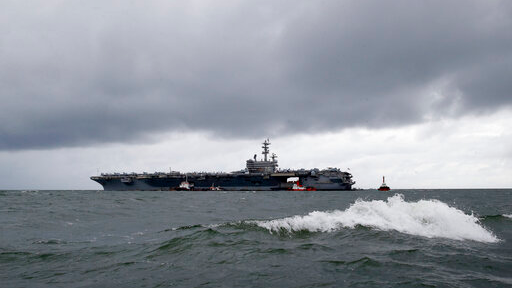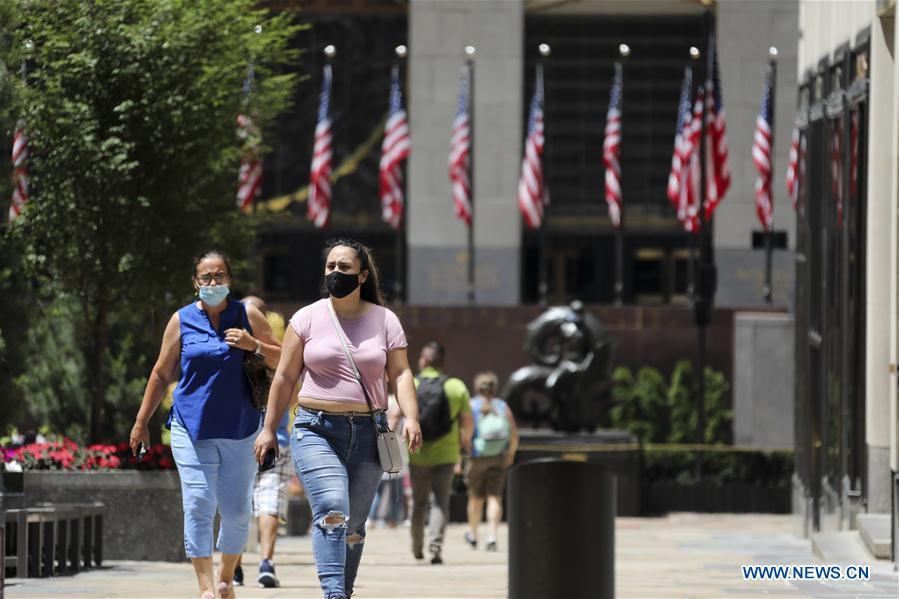
Rain clouds loom over the U.S. aircraft carrier USS Ronald Reagan as it is anchored off Manila Bay, Philippines, August 7, 2019. /AP
Rain clouds loom over the U.S. aircraft carrier USS Ronald Reagan as it is anchored off Manila Bay, Philippines, August 7, 2019. /AP
Editor's note: Andrew Korybko is a Moscow-based American political analyst. The article reflects the author's opinions, and not necessarily the views of CGTN.
The U.S. is provoking China and seeking to distract from its own domestic turmoil by staging naval drills in the South China Sea. Two of its aircraft carriers entered the waters that China claims as its own over the weekend, right near the end of the drills that the People's Liberation Army-Navy (PLAN) was holding in their country's maritime territory. This isn't a coincidence either since the U.S. intends to send several messages through its aggressive actions.
Firstly, it claims that these forthcoming exercises are meant to signal its support for the so-called "Free and Open Indo-Pacific" (FOIP) policy.
According to the Americans, China might interfere with maritime transit through this strategic sea in the event of a conflict, but that narrative doesn't hold up to any scrutiny. The overwhelmingly vast majority of China's international trade is conducted through sea routes, so it wouldn't be China that would ever cut off its own economic lifeline, but the U.S. in that dark scenario.
This isn't just pure speculation but a credible possibility considering the U.S.'s growing number of military bases in the region. It's also something that the Pentagon is seemingly training for considering its planned exercises in these waters and its previous so-called "freedom of navigation operation" (FONOP) patrols there too.
Considering this, it's not the U.S. that has anything to fear from China exercising sovereignty within its own maritime borders, but China that has cause to be alarmed by the U.S.' extraterritorial transgressions.

People wearing face masks walk on Fifth Avenue in New York, the United States, July 4, 2020. /Xinhua
People wearing face masks walk on Fifth Avenue in New York, the United States, July 4, 2020. /Xinhua
Observers shouldn't forget that the U.S. Navy's upcoming drills are taking place against the backdrop of last month's Galwan Incident between China and India.
The U.S. strongly supported India's aggression against Chinese troops on Beijing's side of the Line of Actual Control (LAC) in Aksai Chin, so America's other message that it's sending by these naval exercises is to reaffirm its desire to "contain" China. It hopes to embolden China's other neighbors to follow India's lead in acting just as aggressively against it as New Delhi recently did.
This display of "gunboat diplomacy" deserves to remain in the last two centuries since it has no place in the present one, but Washington nevertheless believes that it can make some piecemeal progress in assembling a regional coalition against Beijing through such saber-rattling. That's a false expectation since all that America is doing is showing comparatively smaller countries that it can just as quickly turn its naval guns against them as it's done against much larger China, which could actually make them fearful of the U.S., not any more trusting.
Another point that deserves mentioning is that these military exercises show that the U.S. Navy's operational capabilities haven't been harmed by COVID-19. There were some worries earlier in the year that this branch of the American armed forces might not be able to flex its muscles as much as it used to following the large-scale viral outbreak aboard the USS Theodore Roosevelt. By sending not one, but two aircraft carriers into the South China Sea, Trump hopes to put those concerns to rest once and for all.
No analysis about Trump's foreign policy would be complete without talking about its domestic ramifications. In this case, he hopes to distract the public from his country's turmoil over COVID-19's summer comeback and the ongoing unrest in its main cities. On the one hand, showcasing the U.S. Navy's operational capabilities could be exploited to further his narrative that COVID-19 isn't a big deal anymore, while on the other, provoking a sharp response from China could distract some in the media into covering foreign affairs more than domestic ones.
Bearing all of this in mind, it can be concluded that Trump is dangerously resorting to "gunboat diplomacy" to send aggressive messages to China in parallel with seeking to distract his domestic audience from their turmoil at home. This is a very risky and irresponsible strategy that suggests weakness more than the strength that he wants to project. The U.S. isn't confident with its regional position otherwise it wouldn't seek to provoke China, and it's so worried about domestic problems that it'll do anything to distract from them.
(If you want to contribute and have specific expertise, please contact us at opinions@cgtn.com.)